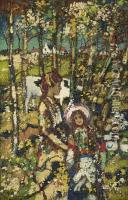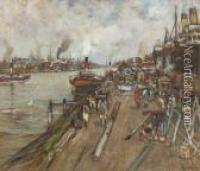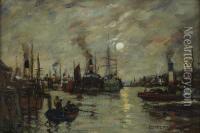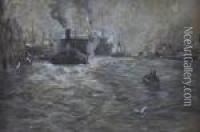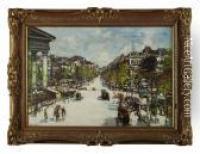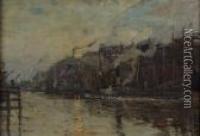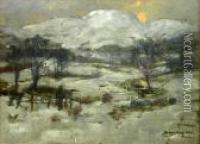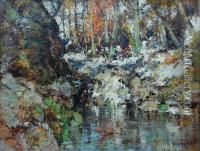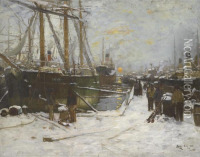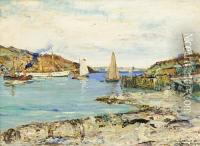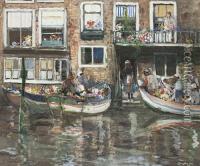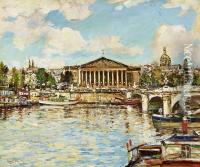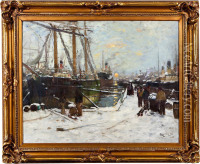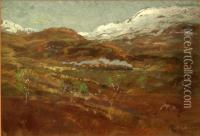James Kay Paintings
James Kay was a Scottish painter born in 1858 in Luss, Dunbartonshire, on the banks of Loch Lomond. He was primarily known for his marine and coastal scenes, capturing the bustling industrial life and the natural beauty of the River Clyde and its surroundings. Kay was educated at the Glasgow School of Art, where he developed his skills and was influenced by the burgeoning industrial scene in Glasgow.
Kay's art was characterized by a vibrant use of color and dynamic composition, which brought to life the energy of the Scottish maritime and industrial scenes of the late 19th and early 20th centuries. His works often depicted ships, shipyards, and the busy life associated with them, reflecting the economic boom of the area during his lifetime.
Despite the industrial focus, Kay also had a profound love for the Scottish landscape, which was evident in his less urban paintings, where he captured the serene beauty of Scotland's coastlines and rural settings. His style evolved over his career, showing influences from Impressionism and Realism, which he skillfully blended to create a distinct visual narrative.
James Kay's contributions to Scottish art were significant, and he exhibited regularly at prominent institutions, including the Royal Scottish Academy and the Royal Glasgow Institute of the Fine Arts. His work is celebrated for its historical value and artistic merit, providing a window into a pivotal period in Scottish history. Kay passed away in 1942, leaving behind a rich legacy that continues to be studied and appreciated in the context of Scottish and British art history.
